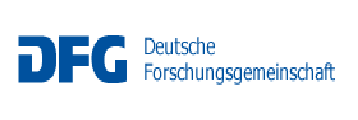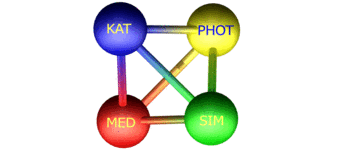The interest of our research group focuses on the properties of atomic clusters present in a molecular beam, which are benchmark systems for nanostructured materials. Small particles offer the unique possibility to explore the size-dependent evolution of many-body phenomena in finite quantum systems. In the experiments we apply laser spectroscopy including tailored laser pulses in order to investigate light-matter interaction processes in small particles starting from ground state properties up to the ultrafast nonlinear dynamics in nanoplasmas. Targets are free and size-selected metal clusters as well as complexes embedded in ultracold helium droplets.
High-resolution photoelectron spectroscopy on clusters of well-defined size and charge state is applied to study the electronic properties as for example size-dependent binding energy shifts. In cooperation with the University of Greifswald the ion-trapping technology is used to prepare metal clusters in negative charge states as high as minus six.
The pick-up of impurities by helium nanodroplets provides a versatile tool to prepare clusters in a weakly interacting environment at ultralow temperatures of 0.4 K. The helium matrix allows forming exotic metastable stuctures, e.g., molecules in triplet states or foams. The electronic and optical properties of these complexes are studied by a combination of resonant-2-photon-ionization, ion mass spectrometry, and electron spectroscopy.
Applying intense optical laser pulses, metal and rare gas clusters as well as hydrogen microdroplets are probed, giving information about the nonlinear response of laser-generated plasmas. The aim of these studies is to entirely characterize and finally control the many-body Coulomb explosion taken place in strong fields down to the attosecond timescale by applying tailored laser fields, including two-color pulses.
Beyond our local activities in the Rostock labs, we are involved in collaborative projects at other research facilities. Metal clusters are investigated using pulsed soft x-rays from the free electron laser FLASH at DESY in Hamburg. These studies include on the one hand single-pulse 3D-imaging to analyze the size-dependent development of geometric cluster structures. On the other hand electron core-level shifts and electronic decay mechanisms of core-excited, mass-selected clusters are addressed. In collaboration with the group of Matthias Kling in Garching we investigate the strong-field response of small particles on the attosecond timescale by two-color and few-cycle laser pulses. In addition, µm-sized hydrogen droplets are in the focus of several advanced research projects. These include the study of near-field effects upon exposure to intense soft-xray radiation in order to control ultrafast processes in warm dense matter, and the generation of GeV proton beams by relativistic laser pulses at the Helmholtz-Zentrum Dresden-Rossendorf.
Our toolkit to analyze charge and momentum of the emitted particles as well as short wavelength emission comprises various techniques like high resolution ion mass spectrometry, angular resolved photoelectron spectroscopy including high-energy velocity map imaging, two-color phase-of-the-phase spectroscopy, charge-state resolving ion energy analysis, and soft x-ray detection. Tunable and ultrafast laser systems are used in order to conduct the studies, which includes pump-probe as well coherent control methods for the analysis and control of the small particle dynamics.
Projects
Previous projects
- DFG-Projekt Nanomatrixeffekte
- DFG-Projekt Ionisationsydynamik in Zweifarbfeldern
- BMBF Verbundprojekt Cluster am FEL
- Graduate school of the SFB
- SFB 652
- HICE - Complex Molecular Systems in Environmental Health
- BMBF FSP 302 "Freie Elektronen Laser"
- Light 2 Hydrogen
- Nano 4 Hydrogen
- Remedis
- DFG priority programm 1153
- Ultra short laser pulses for material processing


